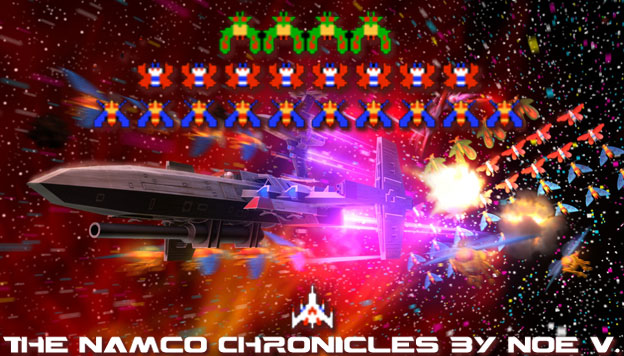
The first time that I realized the games in the Namco universe were connected was actually by accident. It was around 1989 and the arcade scene was pretty strong. It would still be a few years until Street Fighter II dropped and forced every company to get into the genre. So there was a lot more diversity for the few years leading up to it and that was a good thing. A new space shooter from Namco had appeared at about that time. The game was titled Blast Off and looked interesting for a number of reasons. The graphics were bright and colorful. Gone were the blocky ships that I remembered while growing up. The new ship had more fidelity than before, the proportions were slightly cartoonish but it was a small oversight. The backgrounds were amazing. There were several graphic layers that the artists had worked with to create an amazing sense of depth.
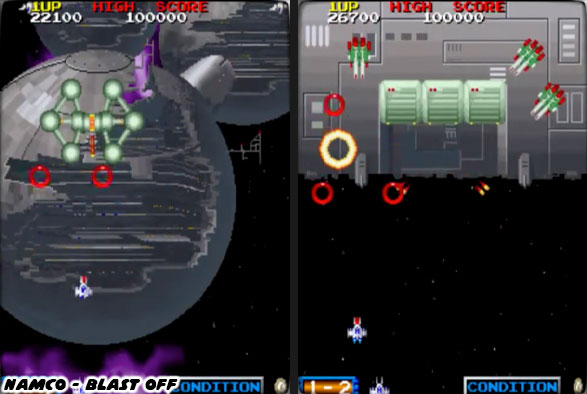
Players would fly through plasma clouds, above twinkling stars and galactic clusters. It felt like a redo of Galaga that was closer to the vision of the designers. The enemy types were more detailed but still flew strafed opponents in dizzying patterns, the larger ships were there to provide a bigger challenge and the end of every level was met with a boss battle. Unlike other SHMUP titles which forced players to stick with one weapon type until they could earn an upgrade Blast Off gave players multiple weapon configurations. Players could switch between the weapon types on the fly. There were variations of a wave, laser and photon cannon that allowed players to shoot forward, diagonal, sideways and even behind the player. This completely changed the strategy when fighting waves of enemies. Sometimes diagonal or sideways lasers could help get through a particularly tough stage better than any forward facing weapon.
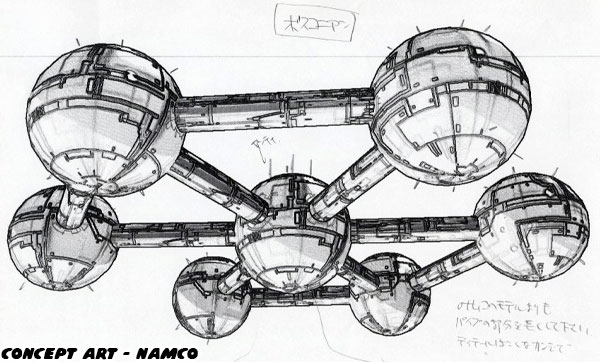
Where the game really came together was in the layout of the missions. Every level consisted of three missions. The first mission was set in deep space as the player was en route to a target. They would engage with small reconnaissance craft and a few scattered larger ships at this point. The second stage was much closer to the objective and players had to fight against wave after wave of tougher opponent classes. In the background of each stage players would catch a glimpse of the level boss. It was an enormous base with six spheres connected to a hexagonal hub. When players finished the second mission they would see the ship fly towards the enormous target. The third mission actually took place inside of the base. The camera would zoom in on players and present a more detailed close up of the ship once inside of the base. Players fought through increasingly difficult areas, filled with sentry cannons and tanks as they went into the heart of the station. If players could defeat the mechanical core, which was protected by a complex series of rapidly moving cannons then they would finish the stage. Players would fly out of the base and watch it explode from a distance. They would then continue on deeper into space and fight larger and more challenging stations. The largest of which appeared like a row of Death Stars connected at the hip.
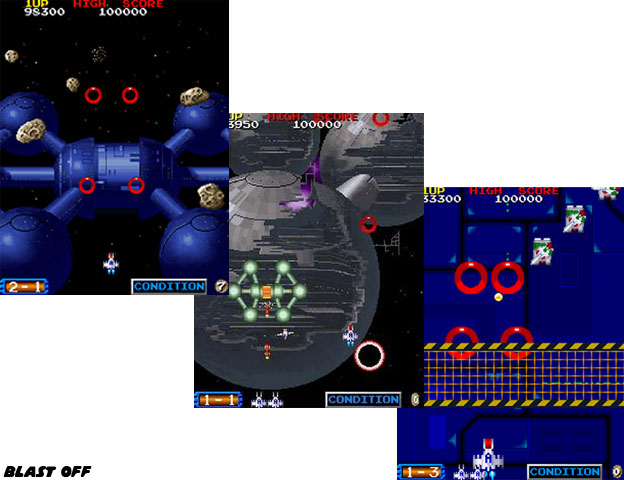
It was the sense of scale that really made Blast Off stick out in my mind. Namco had done a great job at taking a format that I thought couldn't really be improved upon and broke it wide open. Granted, when it came to video games the SHUMP format was the one I was terrible at. By comparison my big brother excelled at those titles but wasn't very good at racing games. I was good in many other genres but didn't quite have the patience or determination to see most SHUMPS through to the end. Blast Off could be considered slow and simplistic to many veterans but for me it felt like a perfect challenge. The idea of being the solitary fighter taking on an entire fleet in deep space was something I couldn't pass up. It was like the best parts of Star Wars, Battlestar Galactica and every other space adventure rolled into one.
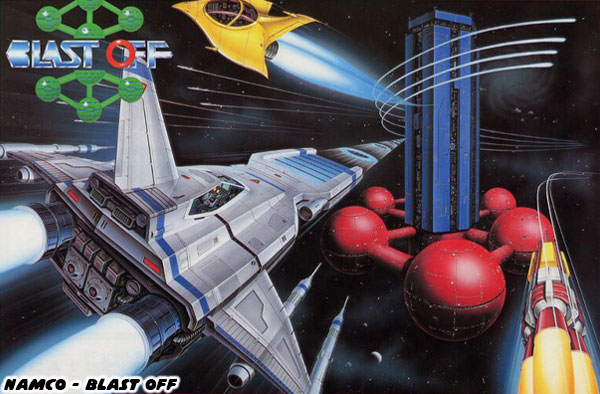
Also, unlike earlier space shooters this one had a beginning, middle and end. The game did not just get faster and harder, like the earlier Namco hits. Blast Off started with the fighter leaving a space carrier with an electronic fanfare that sounded an awful lot like the John William's Superman theme. During the end credits the player would revisit the site of every boss station and see its debris floating in the distance. Eventually they would land back at the home base, the biggest hero in the entire galaxy. It was a rare SHUMP that I managed to beat in the arcade and only with a handful of quarters. In my book it was perfection. That was of course until Namco released Starblade.
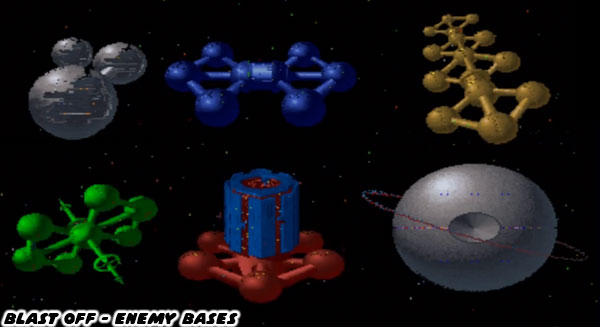
It wasn't long after I had played Blast Off than the pieces suddenly started to fit together. I was walking by someone going through Galaga '88. I noticed a number of improvements that the company had made to the original shooter. Even though I was still in junior high at that time a wave of nostalgia had washed over me. I remember being very young and playing the original Galaga in the corner market. Galaga '88 had improved in the visual and gameplay department by a wide margin. While the majority of the game still took place on single screen levels the enemy types were much more challenging and diverse. It was the jump from location to location using warp technology that caught my eye. Players could see the final destination getting closer each time they defeated a stage and the ship would disappear into hyperspace.
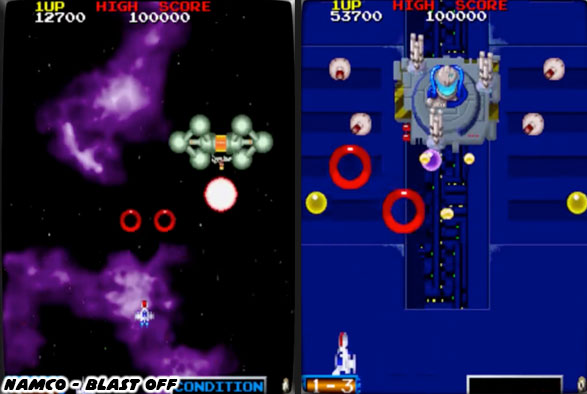
The effect would be revisited in the 3D games like Star Ixiom and Starblade. One of the backgrounds looked eerily familiar to Blast Off. There was an enormous hexagonal space station that was destroyed floating in the distance. There was no way that this game was related to Blast Off was there? As the player went through the stage he got closer to the debris. There was no mistaking it. The Galaga ship was fighting near the remains of the same space stations that I had beaten earlier. When I looked at the title screen I saw that Blast Off was released after Galaga '88. So it was some sort of sequel? I remember seeing ships that were very similar to those in Blast Off and Galaga '88 but much earlier. I just couldn't remember where. I bugged my parents to take me to different arcades every weekend so I could look for the other Namco games that might be related to Blast Off. Finally I came across the game in Cerritos, in an arcade that had some older titles still in circulation.
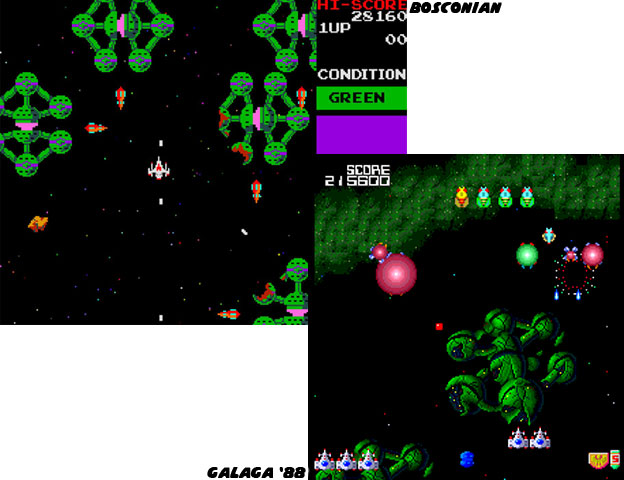
It turned out that the ancestor to both games was a 1981 gem called Bosconian. It was built on the Galaga engine but featured completely different gameplay. In the title players could fly and shoot in eight directions and they had to destroy enemy bases that were hexagonally shaped. The neat thing about the game was that players could fire lasers from the rear of the ship so they couldn't be caught off guard by opponents. This was clearly the inspiration for the weapon types and villains featured in Blast Off. Bosconian was also notable because it was the first Namco game, possibly the first arcade game ever, to feature a continue screen. When I discovered that there was a lineage to the Namco space shooters it blew my mind. I felt like I was living through some sort of Dan Brown conspiracy that had been kept secret from the world. No other studio seemed to grasp the nuances of keeping true to a legacy. Instead they produced games that had nothing to do with each other. Namco was focused on the evolution of a genre and never forgot where they came from.
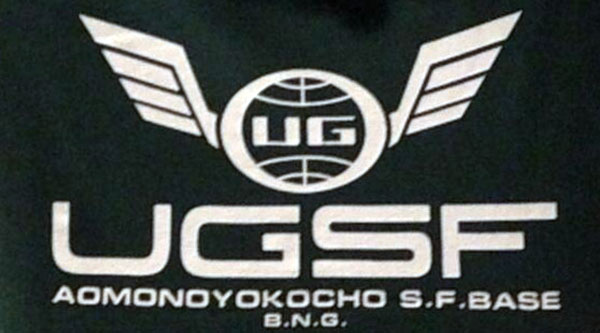
A few years later the origins of the word Bosconian were revealed, at least in canon. The alien life forms were very advanced technologically but also very hostile. They sought out planets to conquer and transform. It was up to the brave Galaxians, the people that traveled to the edge of space as members of the UGSF, to protect humanity. The name Bosconian was derived from one of the most brilliant minds in the Namco universe Dr. Geppetto Bosconovitch. The scientist formerly employed by Mishima Zaibatsu was a genius with few peers. Dr. Bosconovitch had appeared as an important figure throughout the Tekken series. In the game history he had created the cybernetic arm and later cybernetic body for Yoshimitsu, the leader of the Manji Ninja Clan.
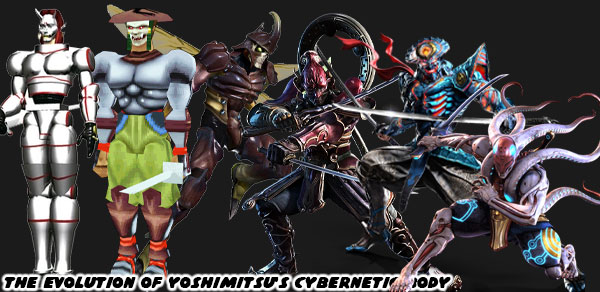
He also created the Prototype Jack (P-Jack) combat cyborg. He was not only good at cybernetic components but also developed the bio-weapons Roger and Alex. Those were creatures that appeared like a velociraptor and kangaroo with boxing gloves. The scientist was not without his rivals however, Dr. Abel was a scientist also working for the Mishima Zaibatsu that became a bitter enemy. Dr. Abel focused his efforts on mind control technology and could command some of the characters in the Tekken series to do his bidding. He also reanimated Brian Fury and destroyed the peaceful Jack cyborg models at every opportunity.
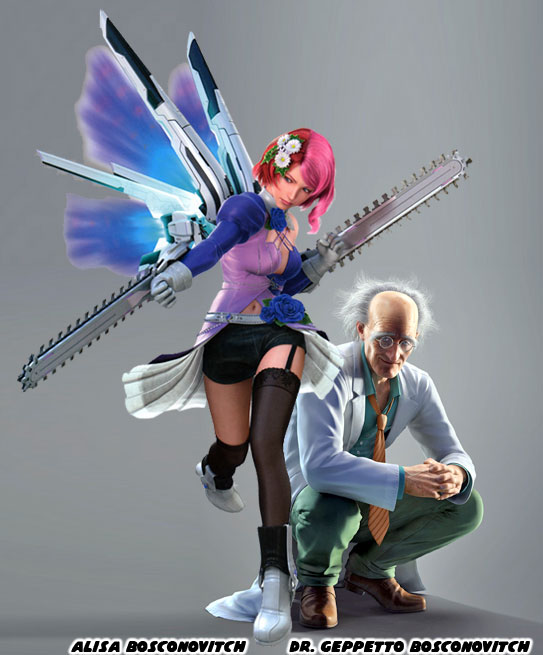
Dr. Bosconovitch developed the "Cold Sleep" program as a form of suspended hibernation. It also seemed to stop the aging process. He tested it out on Nina and Anna Williams, top level assassins that worked for the Mishima Zaibatsu and G Corporation respectively. He intended the Cold Sleep program to preserve the life of his terminally ill daughter Alisa. When Alisa succumbed to her disease Dr. Bosconovitch made an android in her likeness and assigned her to be the bodyguard of Jin Kazama, his new employer. It was the brilliant mind of the doctor that would be remembered centuries after his death. When a new technologically advanced alien species was discovered the UGSF named them Bosconian.
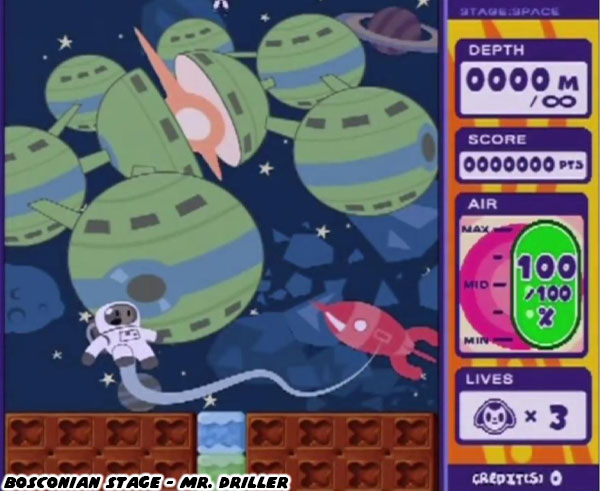
As I got older and was able to travel further and further I managed to play more games in the arcade by Namco and their contemporaries. I was also lucky enough to travel with my brothers and friends to Little Tokyo and see what Super Famicom / Super Nintendo Games were hot and what the real gems were for the Playstation and Saturn consoles. I was very eager to find out where Namco would connect their next game to the Bosconian legacy. It turned out that a little-known PC game from 1994 was another missing link from the company. Star Luster was an amazing remake of an old NES title.
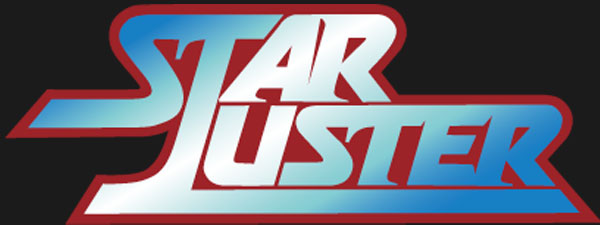
It even featured updated versions of the classic chip tunes. In this title
an evil alien race called the Battura were causing strife not long after the Bosconian Wars. The game took place in the same continuity of Galaga ’88 and Blast Off but featured a first-person perspective instead of a vertical one. It was the template that Star Ixiom would use for the Playstation a few years later. Seeing Namco stay true to their continuity for as long as I could remember made me fans of the company. I admired their own science fiction IP and had more respect for it than most licensed space games. I was curious to see what else the studio had tied together through canon. As it turned out Tekken was not the only game that had a connection to UGSF continuity. The seeds of the series had been planted in a different title. The next blog will feature this game. As always if you would like to sponsor me
please visit my Patreon page and consider donating each month, even as little as $1 would help make better blogs and even podcasts!


























No comments:
Post a Comment